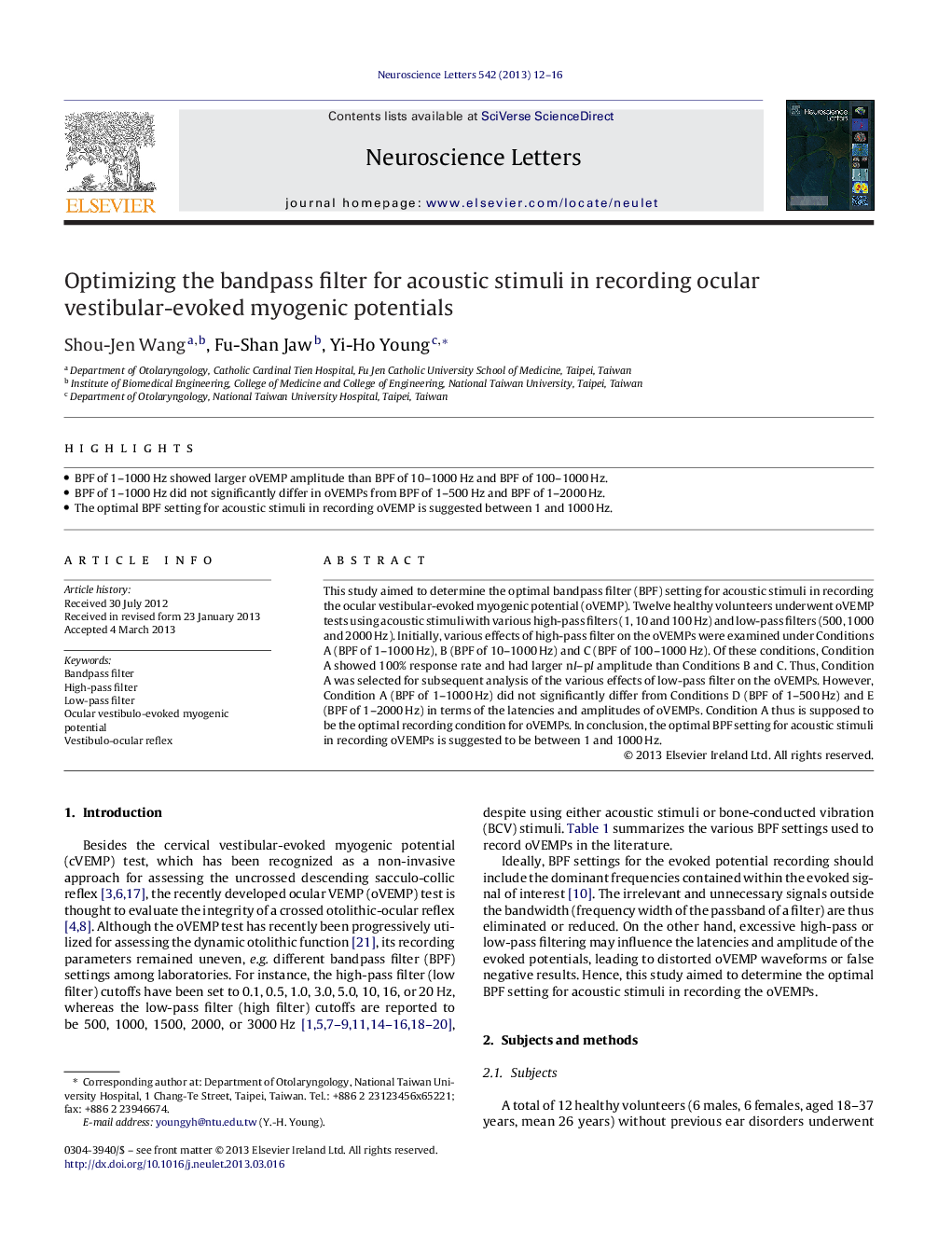| کد مقاله | کد نشریه | سال انتشار | مقاله انگلیسی | نسخه تمام متن |
|---|---|---|---|---|
| 6283313 | 1615156 | 2013 | 5 صفحه PDF | دانلود رایگان |
- BPF of 1-1000Â Hz showed larger oVEMP amplitude than BPF of 10-1000Â Hz and BPF of 100-1000Â Hz.
- BPF of 1-1000Â Hz did not significantly differ in oVEMPs from BPF of 1-500Â Hz and BPF of 1-2000Â Hz.
- The optimal BPF setting for acoustic stimuli in recording oVEMP is suggested between 1 and 1000Â Hz.
This study aimed to determine the optimal bandpass filter (BPF) setting for acoustic stimuli in recording the ocular vestibular-evoked myogenic potential (oVEMP). Twelve healthy volunteers underwent oVEMP tests using acoustic stimuli with various high-pass filters (1, 10 and 100Â Hz) and low-pass filters (500, 1000 and 2000Â Hz). Initially, various effects of high-pass filter on the oVEMPs were examined under Conditions A (BPF of 1-1000Â Hz), B (BPF of 10-1000Â Hz) and C (BPF of 100-1000Â Hz). Of these conditions, Condition A showed 100% response rate and had larger nI-pI amplitude than Conditions B and C. Thus, Condition A was selected for subsequent analysis of the various effects of low-pass filter on the oVEMPs. However, Condition A (BPF of 1-1000Â Hz) did not significantly differ from Conditions D (BPF of 1-500Â Hz) and E (BPF of 1-2000Â Hz) in terms of the latencies and amplitudes of oVEMPs. Condition A thus is supposed to be the optimal recording condition for oVEMPs. In conclusion, the optimal BPF setting for acoustic stimuli in recording oVEMPs is suggested to be between 1 and 1000Â Hz.
Journal: Neuroscience Letters - Volume 542, 10 May 2013, Pages 12-16
